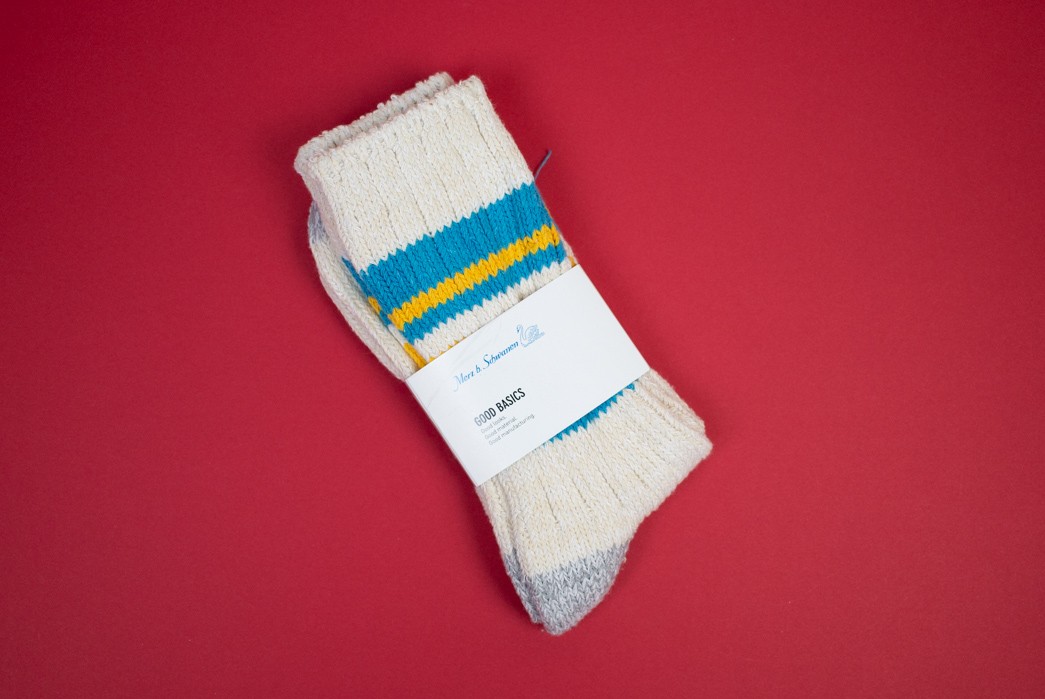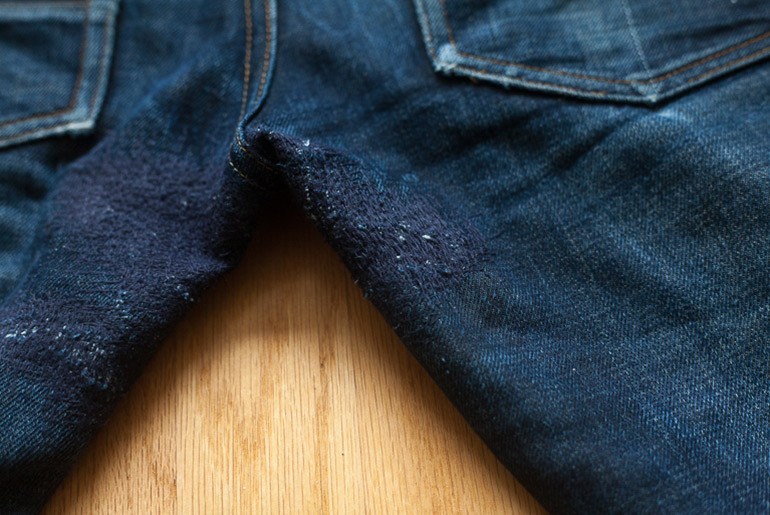- Heddels
- Posts
- Tilden Jeans Review – The Best One Can Get
Tilden Jeans Review – The Best One Can Get
Tilden Jeans Review – The Best One Can Get
Our hands-on experience with Tilden, a one man operation making jeans from start to finish from a Montana studio.
David Shuck

I’m sure you can recall the first time you slid on a pair of raw denim jeans, forced your foot into a Goodyear welted boot, or tried to spread your shoulder blades in waxed canvas. It’s a lightbulb moment of what true quality can be, how natural materials feel, and the maker’s intention in a sea of pre-washed mall-brand slop. Like tasting an in-season strawberry after a lifetime of artificial flavors.
If you’re years or decades beyond that first enlightenment, you may have spent the time poring over websites like this one, running Japanese proxy sites through Google translate, hoping against hope some algorithm serves you a garment equal to that first high and elevates your consumer consciousness to a further plane of divinity.
After a fifteen-year raw denim journey, I’ve now found such an item: Tilden Jeans. And if you have the means, I highly suggest picking up a pair.
By The Numbers
Name: Tilden Jeans Homespun and Barn Find
Fabric:
Homespun: Experimental in-house spun unsanforized 11.5oz. Cone Mills White Oak indigo selvedge denim
Barn Find: Unsanforized 13oz. Cone Mills White Oak indigo selvedge denim
Construction: Exclusively single-needle lockstitch
Made in: Waterloo, Montana, USA
Unique Features:
Double-lined and reinforced front pockets
Snap button and zip fly
Deer leather patch on pocket
Feather and leather accent on coin pocket
Available for $595 at Tilden Shop
About Tilden

The Tilden sewing machine that makes every stitch on a pair of his jeans.
I had two pairs to test, which represent two days of the maker’s time. It’s a true one-man-brand and they’re all made by the titular Tilden Yamamoto on his custom Juki straight stitch machine.
It takes one man (the titular Tilden Yamamoto) an entire day to sew a pair. They’re sewn exclusively single-needle (there are no rivets or bartacks, and the felled seams are done by hand), and the denim is all deadstock Cone Mills.
Tilden has been sewing jeans since the late 1990s, everything is done by hand, on his schedule, at his studio in Waterloo, Montana.
Tilden is also a longtime friend of the now mythical denim figure of Roy Slaper, arguably the most iconic “does it all himself” maker of the 2010s. The fit on these jeans is a collaboration between them and the denims I tried were originally from the Roy shop before he got out of the business.
Design

It’s difficult to break down the aspects of Tilden’s work into subsequent parts as they all function together in greater harmony. The design, construction, fit, and details are intertwined in a way that it’s hard to tell where one begins and the other ends.
These are jeans with character. Not in the way a pair of Balmain or True Religions shout it like a belligerent being dragged out of a bar, more like a refined traveler who keeps to themself. Every stitch and design choice is in service of a greater vision. His concept is the “best jeans that can be made on one machine,” akin to a tailor operating in a mining camp in the late 1800s, using every trick and skill to make it as durable and frictionless as possible.

Some examples: all pockets are lined, including the front pockets double-bagged in a thick custom print, which is usually the first point of failure for me in a jean—the corner of a phone busting through the pocketbag. The front pockets also have a double layer of denim on their edge to prevent the denim from busting or blowing out, usually the second point of failure for me. The belt loops are rolled and tucked into the waistband and feature a flourish on the back double loop.
The jeans also have a zip fly and a snap button, which I was dubious about at first. Like most denimheads, the grip and rip of a button fly is second nature to me, but the Tilden signature snap and zip felt just as effortless after a few wears. The only critique I have for the jeans is the snap button has sometimes come unsnapped, usually when encouraged by flexing my core like getting out of a car or up from a particularly gluttonous meal, but it can be easily and discretely refastened. Tilden also assures me that a pair of pliers can reset the button to a hardier tolerance.

His work makes historical reference but isn’t beholden to it. This is not a “1947 501 variant” or anything like that, there is influence from a variety of sources, but it’s all blended in a way that’s uniquely his own.
Fit

Barn Find jeans presoak.

Barn Find jeans postsoak.
I’ve been waiting for this fit. The perfect medium of rise that sits on the hips, a slight taper to a leg opening that works with boots or sneakers and is in no way restrictive.
Tilden and Roy developed the pattern together, based on old Ben Davis fits from growing up in California. It’s a great all-rounder that I’ve worn with confidence out for a nice dinner and also replacing a toilet.

Homespun jeans presoak.

Homespun jeans postsoak.
In accordance with the design, everything on the fit is just in the right place. I’ve tried on many pairs with higher rises where the pockets are nearly inaccessible and the fly is miserably short. Everything here (at least for me) works without thinking, as I said, frictionless.
Both denims I tried are also unsanforized (I believe everything he sells is), so you have some shrink t0 fit customization you can do once you’ve got them. Here are my measurements for a size 34 before and after a warm soak and a line dry. I would recommend going with your true waist size.

Fabric / Materials

Selvedge ID on the 11.5oz. Homespun denim.
If the fit and design of these jeans haven’t sold you yet, it’s worth it to try a pair for the denim alone. The “Barn Find” and “Homespun” denims are both extremely limited and novel denim runs from the now defunct Cone Mills White Oak plant. Both also previously belonged to Roy before he got out of the jeans business and entrusted Tilden with the remainder of his stock.

The Barn Find is an even-handed 13oz. right-hand twill that, according to Roy and Tilden, was originally developed for a Levi’s Vintage Clothing collection in 2005 that never came to be. It sat on a shelf in North Carolina for a decade before it passed from Victor at Raleigh Denim, to Roy, and eventually to Tilden.
It’s the main pair I’ve been wearing and it starts off looking somewhat plain but the depth of color and texture reveals itself quickly. After about two months, I already have some stunning electric blue highlights.

Selvedge ID on the 13oz. Barn Find denim.
The Homespun is an even rarer find. It’s made from homogenous and characterful yarns that White Oak spun in-house. It’s lighter weight at 11.5oz. and full of character and texture. It feels like a hemp or bamboo blend that’s somewhat scratchy at first but quickly softened into a beautiful and lightweight pair full of pops of nep. This denim was made as an experiment for Roy, and there are only 150 yards left (likely 147 after my pair). Don’t sleep on ’em.

Other materials include the zipper from Universal, literally the inventor of the zipper in 1893, and still one of the best in the game, the snap button from DOT fastener, the standard for NASA and the US military, deer leather for the patch, snap reinforcement, and coin pocket detailing, which also includes a small tuft of feather Tilden sourced himself. The thread is a classic golden in cotton-wrapped polyester for increased durability.
Construction

Tilden, a man with nearly 30 years of sewing and design experience, spends an entire day of his time making each pair of jeans. They’re signed with the date he made them on a tag attached to the pocket bag. As you would expect, the construction is flawless.
There are no shortcuts here. In many cases, it’s the scenic route, with the felling lined up parallel by hand and all other seams taped (save for one cheeky one behind the fly). All stress points are reinforced with backtracking rather than bartacks or rivets, and it’s all done on one sewing machine.

Backtracking in lieu of bartacks as seen on the inside of the waistband securing the belt loops in place.
After very close inspection, there were no loose threads or misaligned stitching, and a very impressive and consistent 12 stitches per inch on all seams.
Conclusion
This is a masterclass in skill, imagination, discipline, and taste merged into a wearable and durable work of art. My fifteen-year itch has been scratched, but I have no idea what could top it at this point.
I had never considered applying “auteur theory” to jeans before, but Tilden’s work represents a unified vision that works at a subconscious level as soon as you pull on a pair and even more so as you dig deeper and deeper into every carefully considered aspect of its construction.
If you’ve got a habit and demand the best, Tilden will set you back more than your average pair of jeans, but it’s worth everything he’s charging and more.
Have a look at Tilden Shop.
Like this? Read these:
What did you think of today's newsletter? |



